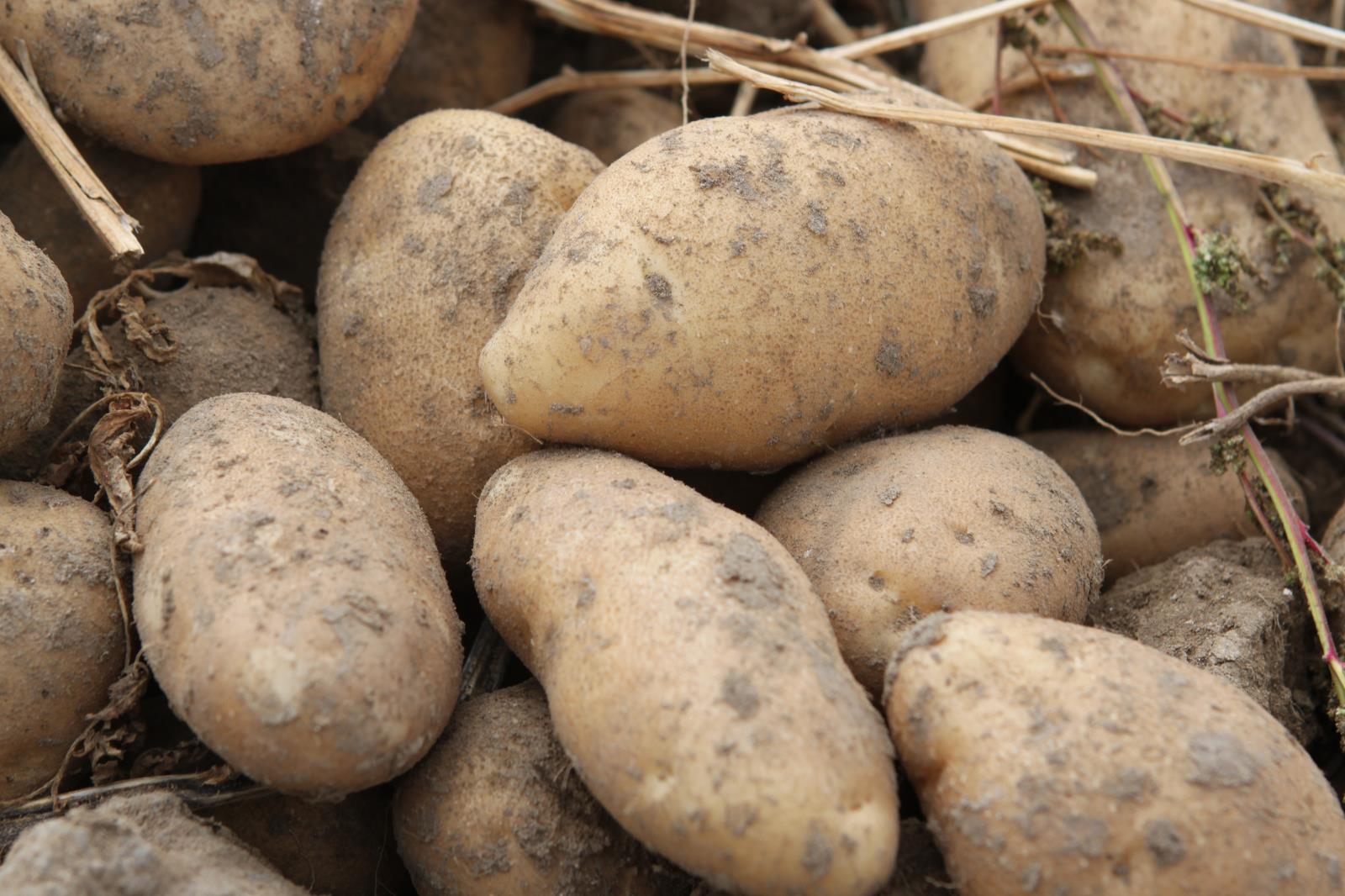Idaho potato acres could decrease this year

By Sean Ellis
Idaho Farm Bureau Federation
POCATELLO – Total acres of Idaho’s iconic potato crop could decrease significantly this year as a result of the coronavirus outbreak.
Although there was a rush on potatoes at grocery stores early on, that has abated somewhat and has not been enough to make up for a major decrease in sales of potatoes and potato products through foodservice channels, according to industry leaders.
“We expect to see a significant cut in acres this year,” said Idaho Potato Commission President and CEO Frank Muir.
He said reaction to COVID-19 has had a major impact on the potato processing industry and industry officials have been told processors are planning to cut acreage by 10-20 percent in 2020.
Muir said growers should not rely solely on data from the past several years to make planting decisions in 2020 and he encouraged farmers to have a customer for their spuds lined up before they plant this year.
“This is different than anything we’ve ever experienced before,” he said.
Potato planting has just recently begun in Idaho and growers are on the front end of planting spuds.
Zak Miller, a potato farmer and director of commodities for Idaho Farm Bureau Federation, encouraged spud growers to think long and hard this year when making their planting decisions.
“COVID has changed people’s consumption patterns and producers need to take that into account when they are making their planting decisions,” he said. “It’s not a typical year and COVID-19 has changed the game.”
Some french fry processors in Idaho have cut contracted acreage by 10-20 percent this year, North American Potato Market News Publisher Bruce Huffaker told Idaho Farm Bureau Federation members and industry leaders April 9 during a conference call.
Some growers have had their contracts cut by as much as 50 percent, he added.
A lot of French fry processing plants are shut down or running on reduced schedules, Huffaker said.
“You’re going to definitely need to see some (potato acreage) cuts to bring Idaho’s crop into balance with demand,” he said.
Idaho leads the nation in potato production and Gem State farmers planted 310,000 acres of spuds last year and 315,000 acres in 2018.
Huffaker said potato acres in Idaho will need to decrease by at least 30,000 in 2020 to balance out the supply and demand situation.
Idaho potato growers need to receive about $7 per hundredweight (cwt) of potatoes they produce in order to break even.
“If we don’t cut back on acres, the best market (in the coming year) may be $2 per cwt, which isn’t enough to pay the bills,” Huffaker said.
Reaction to the COVID-19 outbreak has taken the Idaho and U.S. potato industry on a roller-coaster ride.
Early on during the outbreak, consumers flocked to grocery stores and bought large amounts of potatoes.
“People were running to grocery stores and loading up on the essentials and potatoes happened to be one of those essential items,” Muir said. “Across the U.S., shelves were completely empty of potatoes.”
While potato sales at the retail level are still pretty decent, they are showing signs of slowing down, said IPC Commissioner Randy Hardy, a potato farmer from Oakley.
At the same time, sales of potato products through foodservice channels have basically ceased, he added.
“Sales to restaurants, cafeterias, schools, all those things have slammed to a screeching halt,” he said. “Nobody (in foodservice) is buying right now. It’s very, very, very slow.”
As a result, farm-gate potato prices, which had been up significantly since last fall, have fallen.
“We saw the market go from rocking and rolling at $11-12 per cwt, which are prices we don’t see very often, down to maybe $8-9 but on half the volume or less,” Hardy said.
The COVID-19 outbreak has had a myriad of impacts on the potato industry and it’s a fluid situation, Huffaker said.
“It’s changing day to day and almost hour to hour,” he said.
Huffaker said that when social distancing guidelines and stay-at-home orders are finally lifted, there is likely to be a temporary surge in potato shipments for a week or two to fill the pipeline.
But it’s unrealistic to expect that restaurant and overall potato demand will return to where it was for quite some time, he added.
For one, he said, some restaurants will never reopen, and consumers’ discretionary income won’t be the same for a while, so people will not have the money to eat out as regularly as before.
“All this suggests that demand for potatoes is going to be declining next year,” Huffaker said. “How much it will go down nobody knows.”
Still can't find what you are looking for? Find by topic:
- Achievement Award (YF&R)
- Actions Alerts
- Advocacy
- Ag Ambassadors
- American Farm Bureau
- American Farm Bureau Policy Book
- Archive Photos
- Articles
- Board of Directors
- Calendar - State/District
- Calendar - County
- Capitol Reflections
- Collegiate Chapters
- Committee Application Form
- Commodities
- Convention Annual
- County Presidents & Board Information
- County Resource Page
- Delegate Form
- Discount Programs
- Discussion Meet
- Discussion Meet - High School
- Education Programs
- Events
- Excellence Award (YF&R)
- Expense Voucher
- Flickr
- Gem State Producer
- High School Discussion Meet
- High School Speech Contest
- Hope in Idaho Ag
- House of Delegates Credentials Form
- IFBF Board of Directors
- IFBF Policy Book
- IFBF Staff
- Insurance
- Legislative Action Program
- Legislative Issues
- Library
- MAC Trailer
- Magazines
- Map My Benefits
- Member Benefits
- Member Discount
- Membership Application
- Mission Statement
- Moving Agriculture to the Classroom
- Newsletter Sign up
- News Releases
- News Room
- Open Range Law
